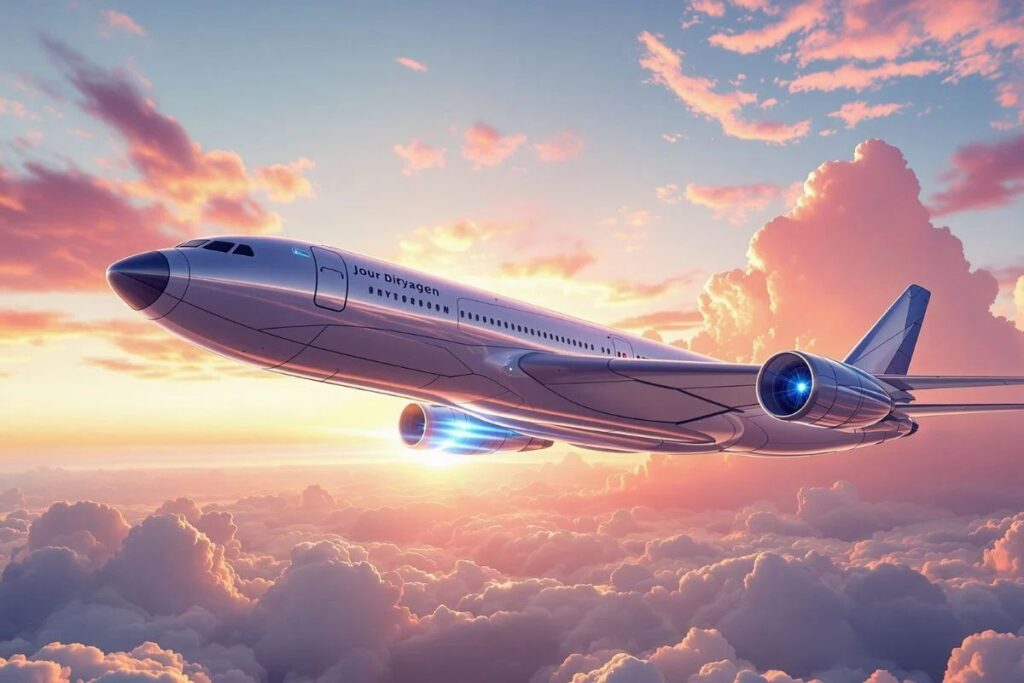June 7, 2025 | TechZone News
In a breakthrough hailed as a pivotal moment for sustainable aviation, a coalition of aerospace engineers and materials scientists has successfully overcome a triple engineering challenge that had stalled the development of hydrogen-powered airplanes for over a decade.
Hydrogen — seen as the clean energy alternative to fossil fuels — has long promised zero-emission flight. Yet, despite its potential, three interconnected problems had prevented its adoption in commercial aircraft: fuel storage, cryogenic safety, and propulsion efficiency. Now, a revolutionary triad of innovations appears to have cracked the code.
The Triple Problem
Hydrogen-powered aircraft require storing the fuel at extremely low temperatures — around -253°C — to maintain it in liquid form, which is necessary to pack sufficient energy into a lightweight container. But this comes with three key hurdles:
- Volumetric Storage Density: Liquid hydrogen occupies more space than jet fuel. Existing tanks were either too bulky or too heavy for flight.
- Cryogenic Integrity and Safety: Maintaining hydrogen at ultra-cold temperatures without leaks or catastrophic failures posed severe risks, especially at 35,000 feet.
- Hydrogen Propulsion Efficiency: Turbines had difficulty achieving comparable thrust and efficiency with hydrogen compared to conventional fuels, particularly in variable altitudes and climates.
Solving any one of these issues independently would have made progress. But solving all three together — in a system light enough for flight and safe enough for commercial passengers — seemed nearly impossible. Until now.
Breakthrough #1: Graphene-Reinforced Cryo-Tanks
Led by a materials team from Germany’s DLR Aerospace Center, researchers developed graphene-reinforced composite tanks that are 30% lighter and 50% more thermally resistant than carbon-fiber alternatives. These tanks minimize boil-off loss, reduce insulation needs, and withstand pressure differentials without structural fatigue — all while fitting into the standard fuselage of a narrow-body aircraft.
Breakthrough #2: Smart Cryo-Management System
To manage hydrogen at cryogenic temperatures, a French avionics firm engineered a self-regulating cryo-management system powered by AI. It dynamically adjusts pressure, insulation flow, and venting based on altitude, external temperature, and flight phase. Most importantly, it integrates a rapid-shutdown and venting protocol for emergencies — solving a key safety bottleneck.
Breakthrough #3: Hybrid Hydrogen-Electric Turbofans
A team at MIT in collaboration with Rolls-Royce developed the first hybrid hydrogen-electric turbofan, capable of transitioning between pure hydrogen combustion and electric boost depending on demand. This not only improves efficiency during takeoff and climb (the most fuel-intensive phases), but it also drastically reduces nitrogen oxide (NOx) emissions.
Flight-Ready by 2029
The integrated system underwent its first successful test flight last month in a retrofitted Airbus A320 demonstrator, achieving a 1.5-hour zero-emissions flight with 10% fuel reserve remaining. The EU-funded program, called HYRIZON, now plans scaled-up testing for 2026, with certification goals by 2029.
Industry Reaction
Airbus CEO Guillaume Faury called the breakthrough “a tipping point” for aviation. “This isn’t just an engineering success — it’s a path to truly sustainable long-haul flight within the decade,” he said.
Environmental groups have also welcomed the news, although they caution that hydrogen production must itself be green. Currently, most hydrogen is made from natural gas. Efforts are underway to scale up electrolysis-based “green hydrogen” using wind and solar power.
The Future of Flight
With the triple problem finally addressed, analysts believe hydrogen-powered airliners could become a commercial reality within the next 10–15 years. Airlines including Lufthansa and Emirates have already signed MOUs for early adoption.
Hydrogen flight may not yet be mainstream — but as of now, it’s no longer a dream deferred by impossible physics. It’s a future being built, tank by tank, turbine by turbine, flight by flight.



